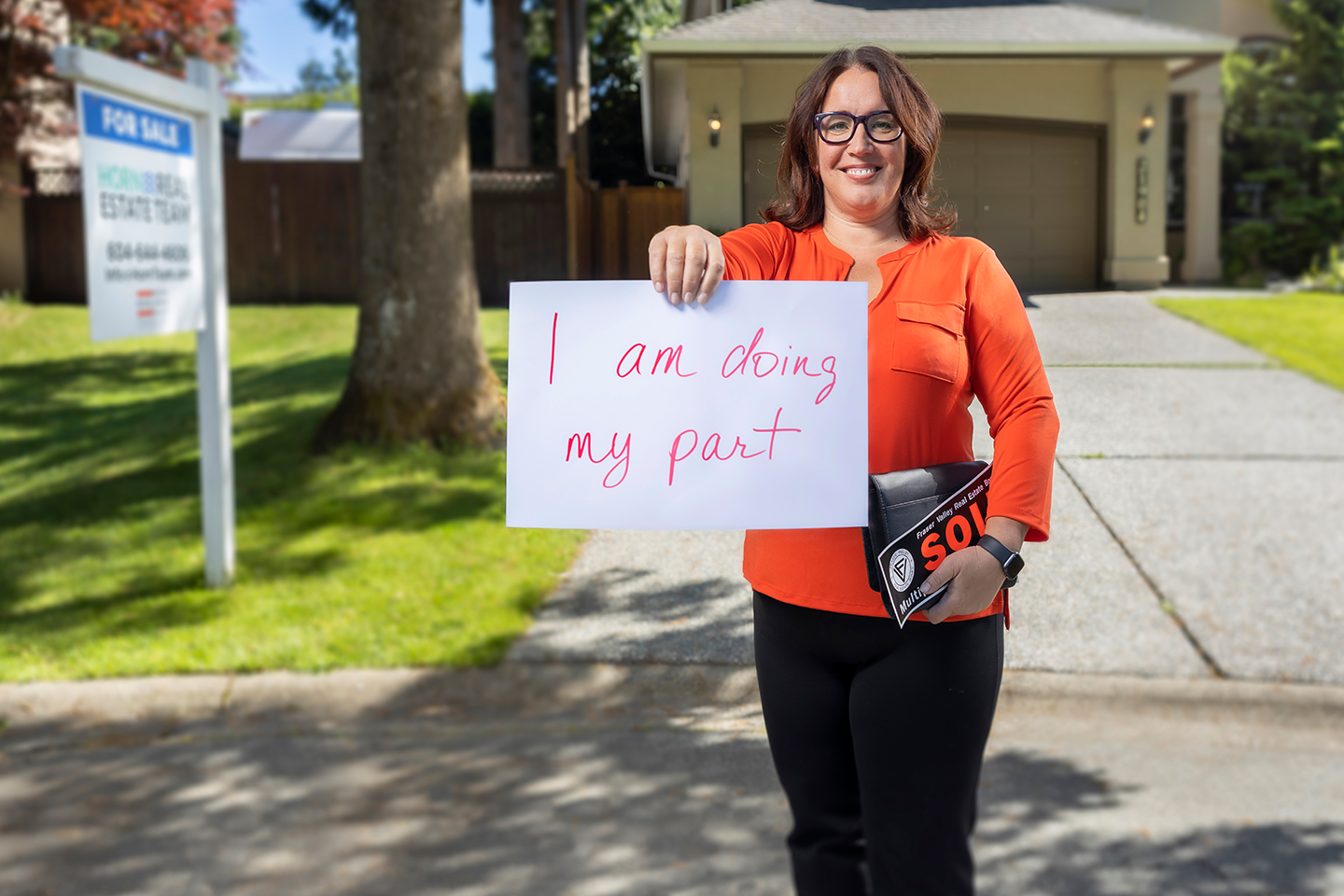Horn Real Estate: Putting the COVID-19 safety plan in place
The safety net of Personal Optional Protection
When the provincial government designated real estate agents as an essential service during the COVID-19 pandemic, Langley real estate agent Pamela Omelaniec knew she needed a plan. Her work involves office staff, potential buyers, sellers, and home inspectors.
She prepared her company’s COVID-19 safety plan — and found some additional protection.
To create her plan, Omelaniec accessed many of the resources outlined on worksafebc.com. While researching, she also discovered Personal Optional Protection, which provides workplace disability insurance for eligible self-employed people. "I’m thrilled with that," she says. "POP coverage gives me a little bit of peace of mind."
Her safety plan details how her Horn Real Estate team implements public health and WorkSafeBC protocols. Open houses were banned but personal interaction can’t be, Omelaniec says. "This is a relationship business," she explains. It’s also a regulated one. Real estate agents have to, for example, verify buyer ID in person and submit a report to a regulatory body. And paperwork requires signatures. "I do have clients who are not comfortable with digital signing."
Her first step was to assemble a kit of personal protective equipment: gloves, surgical masks, and sanitizer. She uses them for client meetings and offers them to clients too.
Omelaniec screens anyone who wants to view a home. Pre-qualified buyers can do a tour but can’t bring anyone with them. They travel in their own vehicle. They answer a health questionnaire and confirm how they are feeling before entering the home.
A sign at the entrance emphasizes physical distancing and asks customers to avoid using high-touch items such as doors and light switches. The real estate agent is available to open any doors and cupboards with sanitized hands or gloves. "We recommend that the buyers keep their hands in their pockets," she says. Washrooms are off-limits. Omelaniec sanitizes the door handle, house key, and lockbox when leaving.
For home inspections, owners are asked to provide unobstructed access to areas such as the electrical panel and attic. Inspectors fill out pre-screening forms and ideally work alone. When done, they also wipe door handles and light switches and properly dispose of gloves, masks, and wipes.
Read about what other employers have been doing to implement the COVID-19 safety plan in WorkSafe Magazine.

